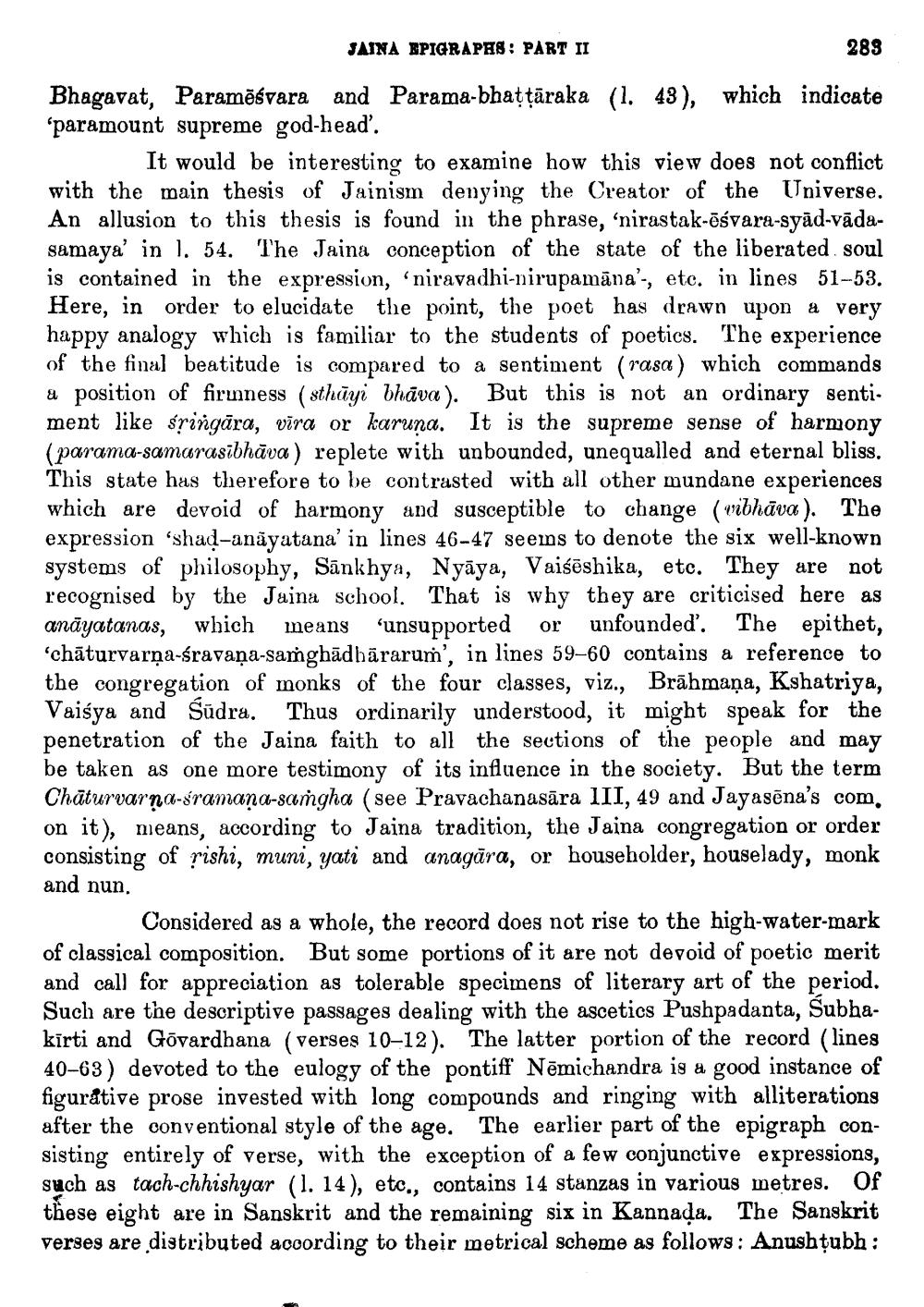________________
JAINA EPIGRAPHS: PART II
288 Bhagavat, Paramēśvara and Parama-bhattāraka (1. 43), which indicate 'paramount supreme god-head'.
It would be interesting to examine how this view does not conflict with the main thesis of Jainism denying the Creator of the Universe. An allusion to this thesis is found in the phrase, 'nirastak-ēśvara-syād-vādasamaya' in l. 54. The Jaina conception of the state of the liberated soul is contained in the expression, ‘niravadhi-nirupamāna'-, etc. in lines 51-53. Here, in order to elucidate the point, the poet has drawn upon a very happy analogy which is familiar to the students of poetics. The experience of the final beatitude is compared to a sentiment (rasa ) which commands a position of firunness (sthūyi bhāva). But this is not an ordinary senti. ment like sringāra, vīra or karuna. It is the supreme sense of harmony (parama-samarasibhāva ) replete with unbounded, unequalled and eternal bliss. This state has therefore to be contrasted with all other mundan
re devoid of harmony and susceptible to change (vibhāva). The expression shad-anāyatana' in lines 46-47 seeins to denote the six well-known systems of philosophy, Sānkhya, Nyāya, Vaiśēshika, etc. They are not recognised by the Jaina school. That is why they are criticised here as anāyatanas, which means "unsupported or unfounded. The epithet, 'chāturvarna-śravaņa-samghādbärarum', in lines 59-60 contains a reference to the congregation of monks of the four classes, viz., Brāhmaṇa, Kshatriya, Vaisya and Sūdra. Thus ordinarily understood, it might speak for the penetration of the Jaina faith to all the sections of the people and may be taken as one more testimony of its influence in the society. But the term Chāturvarna-sramana-samgha (see Pravachanasāra III, 49 and Jayasēna's com. on it), means, according to Jaina tradition, the Jaina congregation or order consisting of rishi, muni, yati and anagāra, or householder, houselady, monk and nun.
Considered as a whole, the record does not rise to the high-water-mark of classical composition. But some portions of it are not devoid of poetic merit and call for appreciation as tolerable specimens of literary art of the period. Such are the descriptive passages dealing with the ascetics Pushpadanta, Subhakirti and Govardhana (verses 10–12). The latter portion of the record (lines 40–63) devoted to the eulogy of the pontiff Nēmichandra is a good instance of figurative prose invested with long compounds and ringing with alliterations after the conventional style of the age. The earlier part of the epigraph consisting entirely of verse, with the exception of a few conjunctive expressions, such as tach-chhishyar (1. 14), etc., contains 14 stanzas in various metres. Of these eight are in Sanskrit and the remaining six in Kannada. The Sanskrit verses are distributed according to their metrical scheme as follows: Anushțubh:




